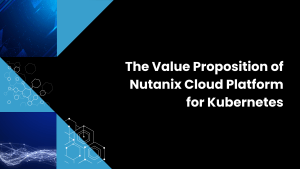 Once again the Wikibon team is gearing up for our annual trek to Oracle OpenWorld. As usual we’ll be there with SiliconANGLE’s theCUBE. We’ve watched Oracle evolve into an integrated solutions company and the firm’s recent storage announcement highlights Oracle’s strategy to take out operational costs by tightly integrating hardware and software.
Once again the Wikibon team is gearing up for our annual trek to Oracle OpenWorld. As usual we’ll be there with SiliconANGLE’s theCUBE. We’ve watched Oracle evolve into an integrated solutions company and the firm’s recent storage announcement highlights Oracle’s strategy to take out operational costs by tightly integrating hardware and software.
In 2010 Wikibon wrote a piece, which put forth the premise that independent software vendors, and particularly Oracle and Microsoft, were intent on bundling more storage function into application stacks to drive down costs. In that post we said:
“The move to integrate storage function into the application stack is real and in some cases can add substantial value to organizations. But there is a price to pay and IT executives need to understand the strategies and implications for long term success.”
What did we mean by substantial value? Essentially we were saying that integrated, software-led storage function was simpler, more cost-effective and from a performance and recovery standpoint, to the extent that the application and database were directly integrated with storage function, applications would run better and be more stable.
What did we mean by “there is a price to pay?” The drawback of this approach is the lack of leveragability of the infrastructure, meaning the storage functions aren’t as fungible across the application portfolio. Rather the ISV-led approach is effective in narrower use cases and not so much as a general-purpose platform. So true costs will depend on the degree of desired leverage across the application inventory. Some infrastructure serves applications that are purposely isolated (e.g. many Oracle database apps). These are great candidates for a tightly integrated stack. Other infrastructure is more general purpose in nature and may benefit from a more generic approach—i.e. integration below the application and database.
In this post we’ll evaluate Oracle’s strategy, how it relates to storage and what it means to competition in the industry. We’ll also focus on some of the differentiators Oracle is trying to put forth as it shores up its storage business and what this means for customer value.
Oracle’s Game-Changing Moves
Larry Ellison used to rip competitors that “wrote checks, not code,” meaning he was focusing Oracle on organic R&D, not acquisitions. PeopleSoft changed everything. Ellison decided that the software business was due to consolidate and saw an opportunity for Oracle to plug its product holes, speed innovation and time-to-market with critical functionality for customers, expand its partner ecosystem and deliver better returns for shareholders.
If there’s any doubt this strategy worked one only has to look back to January 2005 and compare Oracle’s stock performance to that of the NASDAQ Composite. Oracle’s track record speaks for itself.

Oracle’s acquisition of Sun, Wikibon believes, was inspired by a similar sea change spotted by Ellison. It is our view that he was heavily influenced by the success of Apple’s integrated hardware/software approach and believed he could bring the iPhone metaphor to the enterprise – hardware and software integrated in a seamless solution.
While a clear motivation was to secure access to Java (and keep it out of IBM’s hands), the Sun move permanently changed the hardware business. I’ve argued consistently this was a good move by Oraclehowever many smart folks counter my points simply by pointing at the revenue declines in the former Sun hardware business. It really doesn’t matter – this is the play that Oracle called and the company is seeing it through.
Despite the controversy, few could argue that the Sun acquisition wasn’t game changing. Oracle has a huge installed base – nearly 400,000 customers of which more than 300,000 run its database. Virtually every major hardware player in the server and storage business targets Oracle customers as a strategic constituency. NetApp used to claim it was Oracle’s largest supplier of storage. EMC claims a huge installed base of Oracle customers, approximately 70,000, a figure that is 46% larger than Oracle’s entire hardware customer base. Oracle and HP were famous bedfellows in the Unix era and HP was Oracle’s strategic hardware supplier for the original Exadata solution. Even IBM, Oracle’s largest competitor, touts the importance of Oracle customers to its business.
Everyone wants a piece of the Oracle action.
Post Oracle’s Sun acquisition its strategy became quite clear: Leverage the strategic advantage of engineering hardware and software together to drive incremental value, lower risk, improve agility and deliver value to Oracle customers that its competition couldn’t match.
Fundamental to this strategy is the so-called “Red Stack,” which refers to the all-Oracle integrated solution comprising storage, server, hypervisor, OS, database, middleware, applications and management. The Wikibon community has extensively discussed the main questions around this strategy including when does it make sense to risk lock-in to simplify operations and increase agility.
Other questions in our community have revolved around the degree to which Oracle needs best-of-breed components of the stack to compete. For example, can OVM cut it as a strategic hypervisor, can SPARC and Solaris compete with Intel, Microsoft and IBM and what about storage? Does Oracle need to compete off-platform to secure best-of-breed status for each of the piece parts?
Oracle’s Steady Storage Progress
Observing Oracle’s storage strategy is instructive to this discussion. I’ve been tracking Sun and now Oracle storage for some time and would make the following seven observations:
- The world generally had low regard for Sun’s storage relative to EMC and NetApp. Many people have assumed Oracle would continue to struggle from a product standpoint – I believe they are underestimating Oracle;
- Storage was always secondary (or lower) to servers at Sun and while the same may be true at Oracle, Ellison and his executive team in my view have a much stronger appreciation for the strategic importance of the data store than Sun ever did;
- I don’t have exact numbers but I’m confident that the R&D budget the storage guys at Oracle are working with is bigger and more focused than the one at Sun. Oracle management has a clear goal of being #1 on its own platform and is gunning for NetApp first (with the ZFS Appliance) and eventually EMC;
- The ZFS Appliance is a winner. It is improving and gaining traction in the marketplace and is proving to be a cost effective and very high performance system.
- Oracle is starting with the low hanging fruit – going after NFS opportunities as a backup target trying to displace NetApp. Its recent ZFS Appliance announcement extends the storage platform into high performance analytics use cases with extremely competitive price/performance. While the system still lacks certain functionality it is only a matter of time before Oracle fills these holes and goes after the heart of its transaction database installs which of course is EMC’s stronghold.
- Oracle serves, has the attention of, and sells storage to DBAs and application owners. These are the people with the “juice” in IT organizations. No other hardware vendor with the possible exception of IBM, can even come close to making this statement.
- Oracle is stacking the deck by locking competitors out of certain function. Not only is it touting integration throughout the entire stack, but it also is exploiting certain functions exclusively for its own benefit.
This final point is important. There are three examples today where Oracle storage, (and only Oracle storage) exploit software function and make applications and databases run better.
Oracle’s Intelligent Storage Protocol (OISP): OISP is like a “speed dial” into Oracle Database 12c. It’s like Oracle has a Bat Phone to the Mayor’s office while everyone else is on rotary dial. What Oracle is doing is attacking manual tuning of critical storage parameters, such as record size. Oracle claims OISP reduces manual tuning and re-tuning by 65%. How does Oracle do this? OISP feeds metadata details to the ZFS Storage appliance, which uses this information to dynamically tune storage parameters. Oracle controls the protocol and does not open up the metadata path to competitors.
Hybrid Columnar Compression (HCC): Oracle now compresses the data before it’s sent to the storage system, which generally results in the movement of less data and increases performance. Because compression is integrated with the Oracle Database, queries often can run directly on the compressed data.
Hybrid Columnar Compression uses a combination of row and columnar methods for storing data. This hybrid approach achieves the compression benefits of columnar storage, while avoiding the performance shortfalls of a pure columnar format (pure columnar works great for analyzing data, for example, but when it comes to transactions, a compressed column gets in the way, which slows things down). Hybrid Columnar Compression only works when an Oracle storage system (e.g. the ZFS Appliance) is attached. Oracle claims it can achieve 10-50X compression rates with HCC.
Oracle’s Auto Data Optimizer (with Hybrid Columnar Compression): Oracle 12c has a feature called Automatic Data Optimization, which dynamically applies compression levels and moves data between storage tiers to ensure the highest performance and most efficient placement of data. Oracle uses heat maps to identify candidate data that is suited for Hybrid Columnar Compression. It’s policy-based so it can be applied throughout the data lifecycle. So while competitors’ storage can see the heat maps, they are locked out of getting access to Hybrid Columnar Compression so they can’t act on the data.
The End Game
Oracle’s integration strategy, quite simply, is to drive operational costs out over time. It’s early days but Oracle realizes high degrees of integration will yield lower operational costs. Oracle doesn’t make money from customers spending effort on tuning databases and applications. As well, Oracle’s customers constantly complain about license and maintenance costs. Oracle, rather than cutting price, is selling value by touting integration as the lynchpin.
Today, nearly 70% of spending related to server and storage infrastructure goes to labor costs over the life of the systems. Oracle’s strategy is to lower the costs of management, leaving more to spend on Oracle software and integrated systems. This message/strategy will resonate with senior IT executives who want to focus human capital on more strategic activities.
Meanwhile, Oracle’s storage competitors will argue their systems are more functional and as such they’ll be able to replicate Oracle’s value, despite being locked out. The battle, as David Floyer’s piece on this topic demonstrates, comes down to the following four factors:
- The speed at which Oracle can deliver new storage function to the market;
- The ability of competitors to match Oracle’s value proposition despite being blocked from access to critical database enhancements;
- The degree to which Oracle’s messaging resonates with application heads and DBAs;
- The new equilibrium reached in the market – in other words will Oracle’s competitors cozy up to the likes of Microsoft with an open platform strategy that competes with Oracle’s database dominance.
Regardless, as San Francisco football coach Jim Harbaugh says: “you‘re either getting better or you‘re getting worse…”
In the case of Oracle’s storage offerings generally and specifically the ZFS Appliance, it’s getting better.



